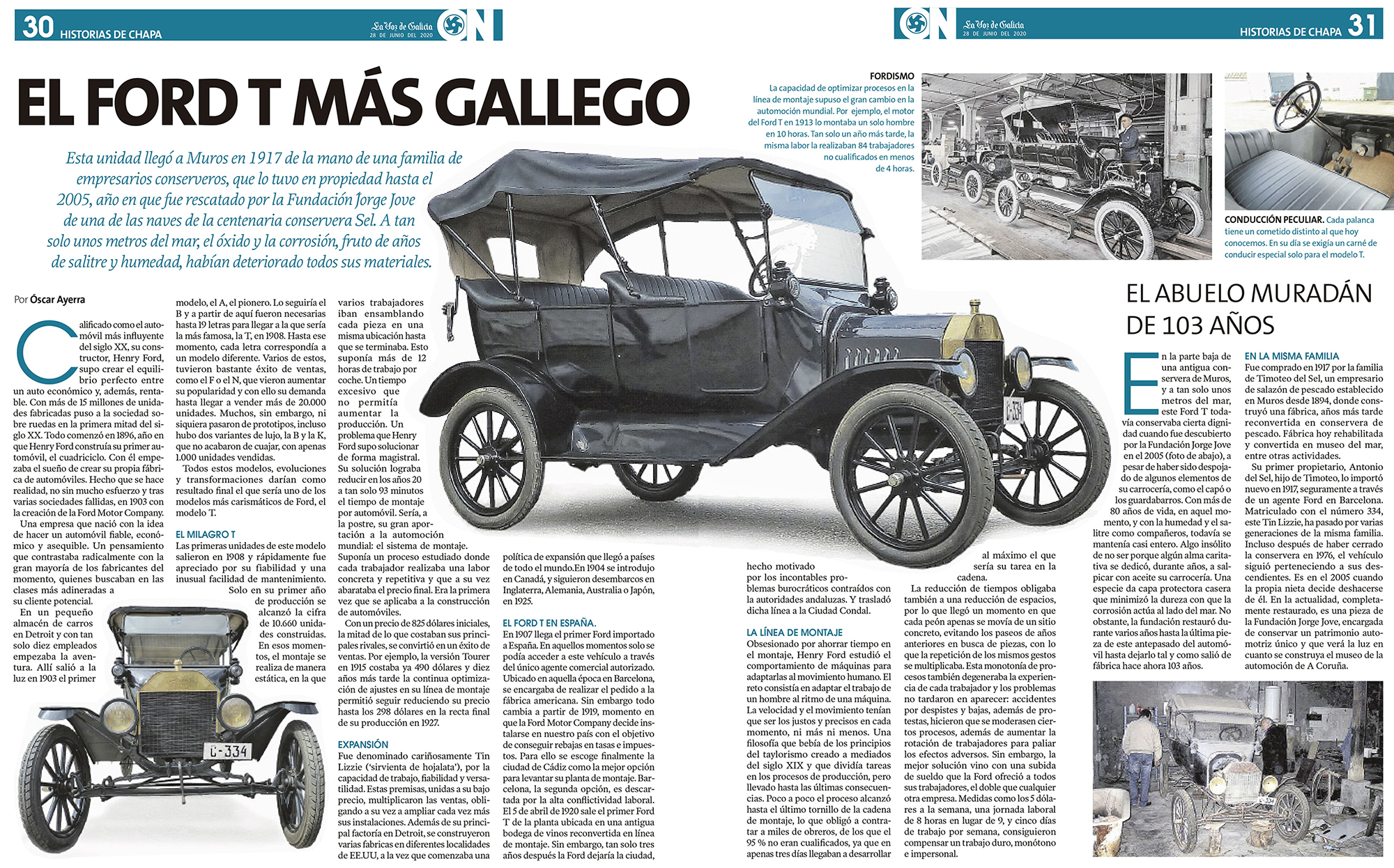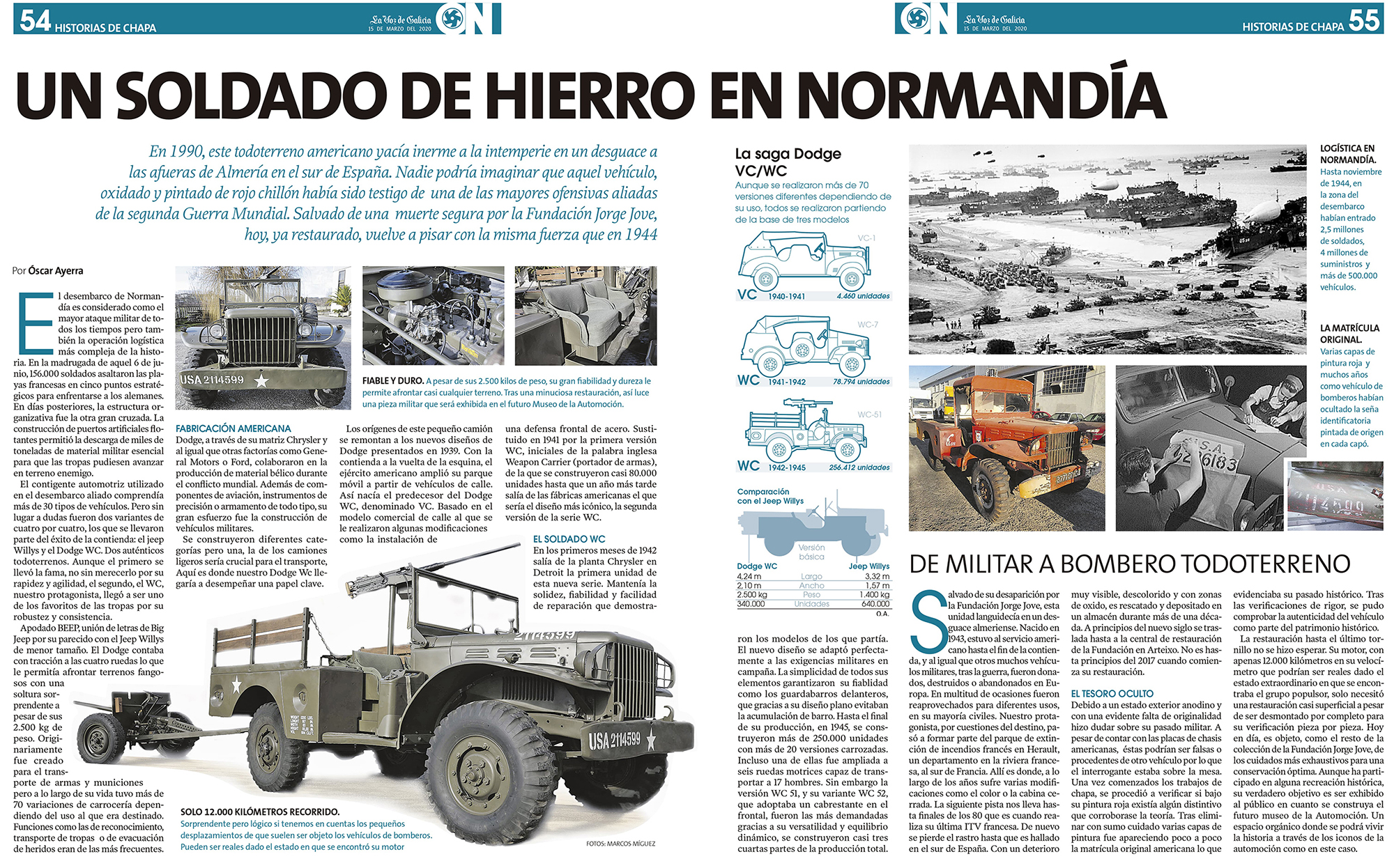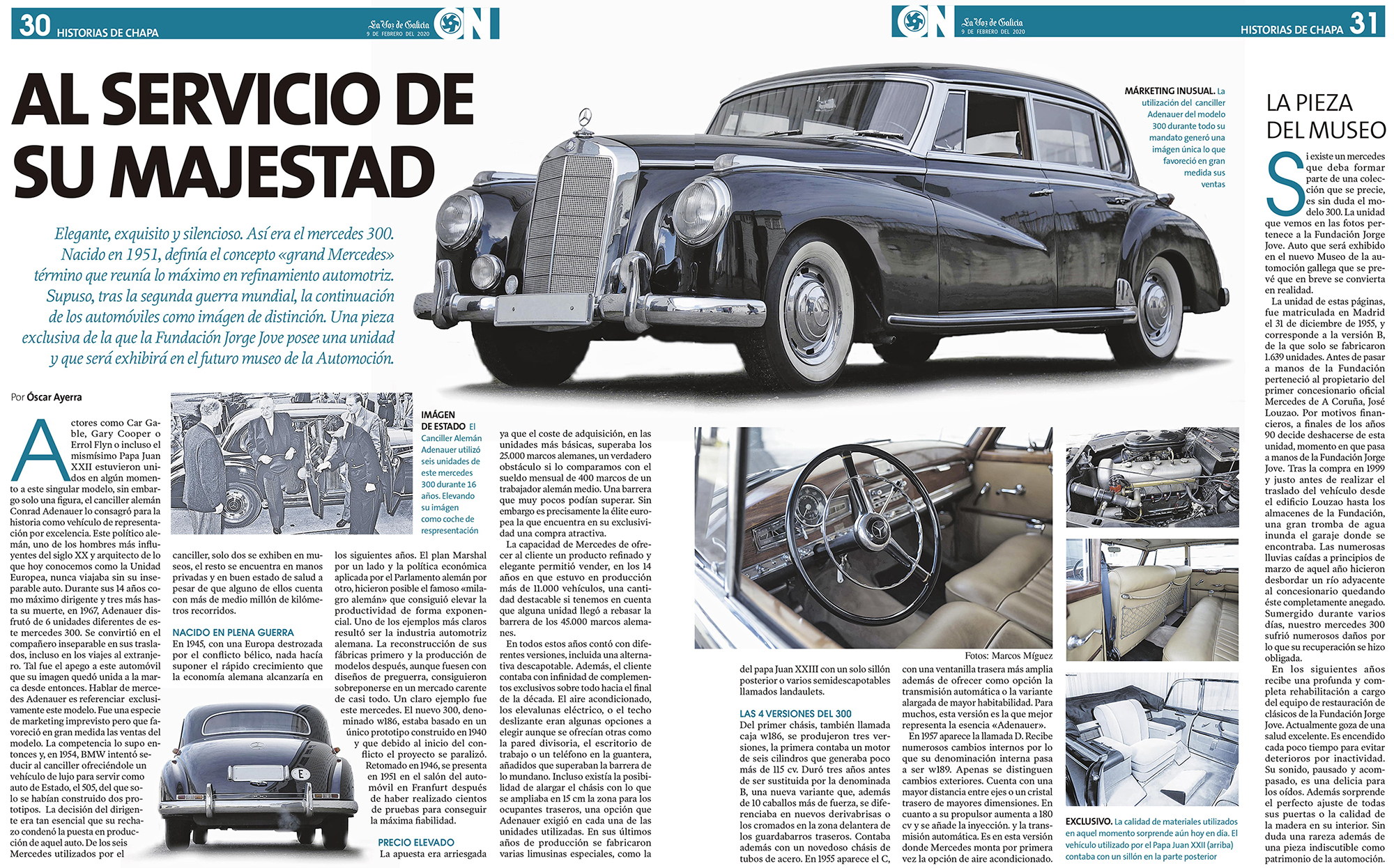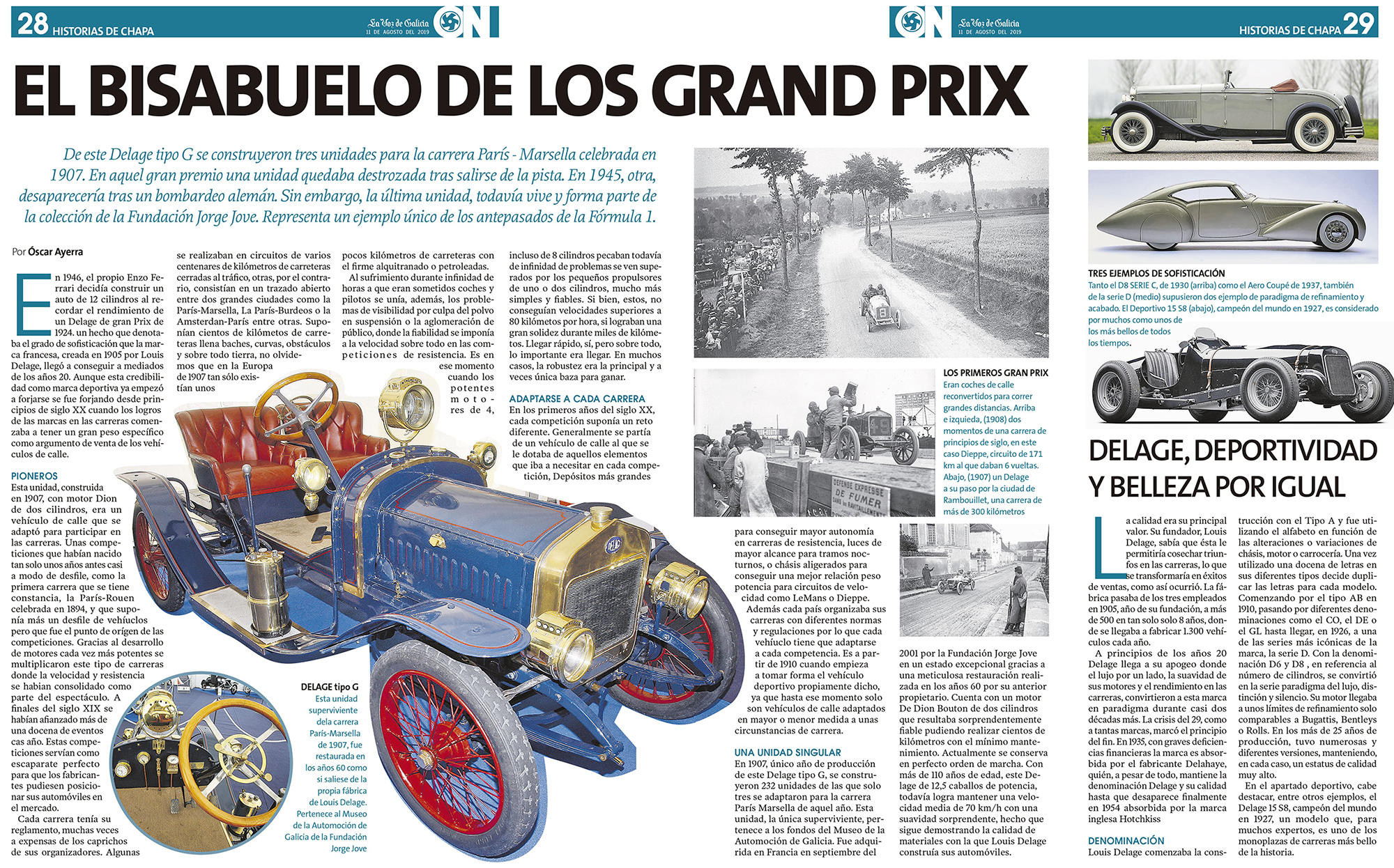
This unit was brought to Muros in 1917 by a family of canning businessmen, who owned it until 2005, when it was rescued by the Fundación Jorge Jove from one of the warehouses of the century-old Sel cannery. Just a few metres from the sea, rust and corrosion, the result of years of saltpetre and humidity, had deteriorated all its materials.
- Read the online version in La Voz de Galicia by clicking here.
- PDF download available by clicking here.









